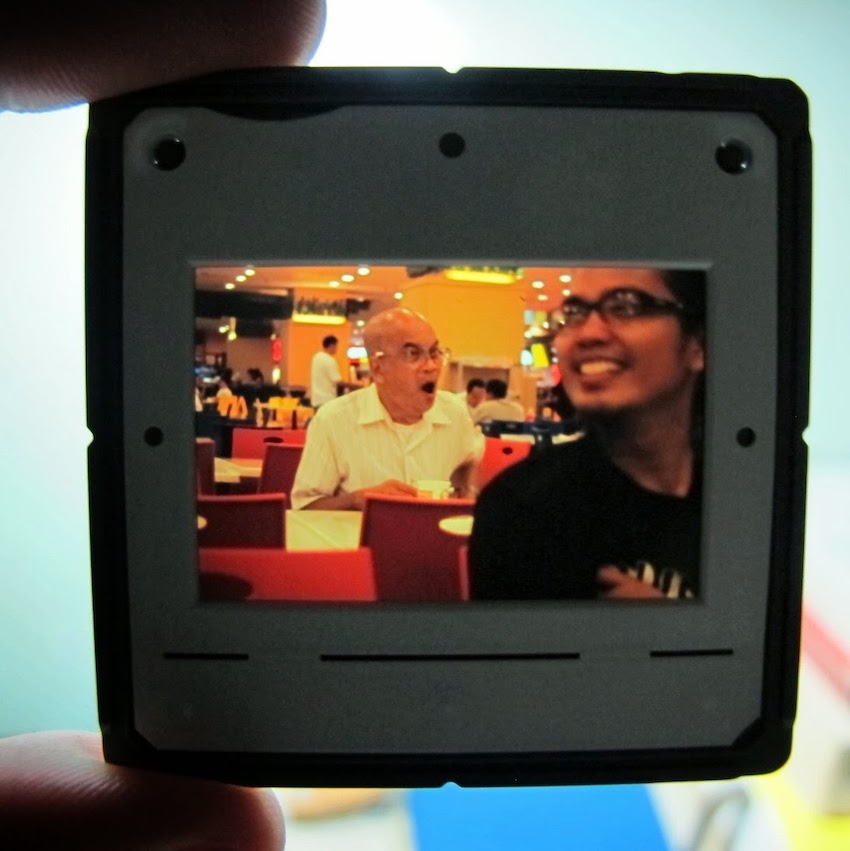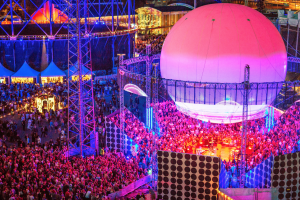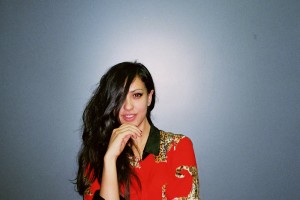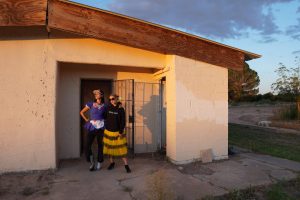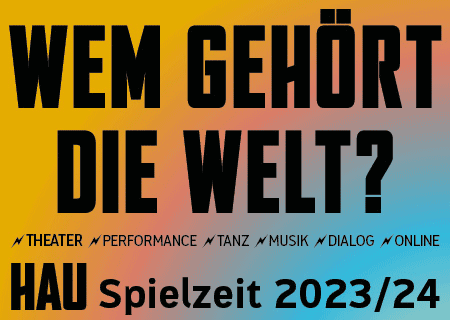Merv Espina: “Access. Transformation. Emancipation.”
Merv Espina is an artist and curator based in Las Piñas, Metro Manila; he is a member of the Akademie der Künste der Welt (Academy of the Arts of the World, ADKDW). His artistic practice involves sound, exploring it as both space, form and material.
On Wednesday, 29th of November 2023 Merv Espina presents “Media Encounters” at the Cinema Alte Feuerwache in Cologne.
Thomas Venker and Merv Espina exchanged some questions and answers ahead of the event.
Merv, you are normally living in Las Piñas, a city in the philippine region of Metro Manila. Right now you are in Cologne for a residency at ADKDW.
Of course I am interested in your experiences here so far?
Cologne is cute and easy to navigate. Very bikeable. Most places are usually just 20 minutes away.
My sense of scale is different. Metro Manila is one of the largest cities in the world in terms of population. Metro Manila is actually 17 local government units (LGUs) comprising 16 cities and one (1) municipality. Several of these cities within Metro Manila would be larger than Cologne. Cologne is barely 1.2 million. Quezon City in Metro Manila is at least 3.2 million. The total registered population of Metro Manila is over 14 million, but the daytime population is much bigger. The population of Mega Manila, comprising the extended suburban and larger metropolitan areas in the nearby provinces (or states here in Germany) would commute to Metro Manila during the day. So it’s a swollen mess. Mega Manila is at least 26 million. Las Piñas is in the southern part of Metro Manila. Where I live is closer to another city, Bacoor, in the next province (state), Cavite. But these numbers are small compared to other cities in China or India.
Public transportation in Metro Manila is not that great. We’re famous for terrible traffic, competing with other nearby mega cities like Jakarta and Bangkok. So among the things that I like about Cologne is the proximity to other cities in NRW and the ease of travelling there. Commuting from Las Piñas with public transportation, it would take me three hours to reach Quezon City, in the northern part of Metro Manila where I used to live. In three hours from Cologne I could be in another European city, in France, Belgium, or the Netherlands.
The phillipines are quite far away from Cologne, not only geographically speaking, but also regards the political and social general conditions. Could you take our readers by the hand and give like a short descriptions of your home country?
Germany and the Philippines both have sausage traditions. Germany has the wurst, and cities and states compete for the best wurst. The Philippines has longganisa. Germany is mostly a contiguous land mass, and German is widely spoken along with related dialects. The Philippines is an archipelago, with over a hundred local languages, plus dialects. You can imagine that applied to sausage variations. No better longganisa, no better wurst. There is no one true sausage.
What does this mean for your daily artistic working process?
I’m mostly vegan.
You artistic work is not just concentrated on your own artefacts, you are also deeply involved in public radio and festival projects, magazine publications, educational programs and many more things. Do you feel that working as an artist in 2023 this is simply how it has to be, or is this more likey coming from your own individual working practise?
I try not to have artefacts. My practice came to be because of pragmatic concerns. I don’t really have a material or studio practice. I also don’t have storage space. These things need capital that I don’t have. I also don’t have a relationship with galleries or the art market. I would much rather invest in people than in materials. I would much rather be involved in producing works enjoyed by a larger group of people than provide material objects that would go well with someone’s designer sofa. A lot of the work I’m involved in is very collaborative in nature. Authorship is shared, obscured or denied, or subsumed to collectivities, for better or worse. These works sometimes take the shape of popular social forms and more accessible media. I’m an agent among many.
Merv, you work with film, music, comics, present your work in installations as well as with performative choreographies. As different as these forms of expression are, would you still say that they are all held together by a common thread? And how would you describe it?
I’d like to think that my work is epistemological in nature. It’s an investigation into the structures and conventions of artistic practice.
How do we know what we know?
Why are things the way things are?
Can they be something else?
So this involves a lot of research and tracing various histories of ideas, materials, technologies, and their trade routes, and their various degrees of rooted- or rootless-ness.
I also tend to question established norms. When I see a painting, I also think about where the pigments came from. How much did it cost? What is the smell of blue? Or sometimes the prompts can be transformative, even alchemical. For example, revolutions come and go like storms and the choruses of a song. So what is the sound of anti-imperialist protest music as a tropical typhoon?
What is it in general that you search to achieve by your art?
Access. Transformation. Emancipation.
You are also member of the ADKDW. Does the interaction with your fellow members on the board has an impact on your work?
If so please roll out.
It’s an honour to be in a list with them. But I’m barely two years in and have hardly met some of them. I’m still in the process of knowing more about what they do. But what I’ve seen so far is very inspiring, even intimidating.
On 2.11. you presented “COUNTERATTACKS OF STRANGE WORLD MUSIC“ at Elektra Bar as part of your ongoing research project „Media Encounters“.
First the question: What is „Media Encounters“ all about?
The Elektra Bar session was not part of the “Media Encounters” at all. The Elektra session was more a listening session of a small sampling of other research projects and the songs that I managed to find or dig up in the process.
“Media Encounters” is a research project that’s much more about the film and video works in the global majority produced through German cultural funding, starting with those produced by the Goethe-Institut and their global partners between the late 70s through the late 90s, at a time when of radical shifts in both technological media and geopolitical states.
Do you feel that a dj set as played at Elektra Bar is kinda the same coming from your artistic practice as a scientific lecture? Can music equal the words?
A DJ set can be educational, even transformative. A DJ set can be a lecture. Sometimes sounds can carry more weight than words. But the Elektra Bar session was not a DJ set. I wish I just did a DJ set there though.
When you present your music narratives to an audience, do you mind travel also back to the places these music originates and all the stories it includes for you?
Sometimes, but not necessarily. Sometimes the stories of some songs or recordings are lost. One can only imagine, speculate, fill in the gaps.
Did the audience come up to you during the happening or after to start a conversation about what they just heard?
Yes. I guess the selection was quite new to them, but not necessarily to my part of the world or the circles I inhabit.
On Wednesday you present a film screening of video art, experimental films and documentary films of the 80s / early 90s from the former Third World at Alte Feuerwache in Cologne; these films cover the topic of the Cold War and the times of upheaval in the post-Soviet era. What is it that aroused your interest explicit for this region and times?
They don’t cover the topic of the Cold War or the post-Soviet era. They were simply produced during that time period. It situates them. On Wednesday, I’m presenting works produced within a 10-year period, from Manila, to Hong Kong, to New Delhi, to Yogyakarta, made utilising analog film (Super8 and 16mm film), and analog video (BetaSP, U-Matic and VHS).
Bookending them are “Juan Gapang” (1987), made just after the fall of the Marcos dictatorship and the 1986 EDSA Revolution in the Philippines, and “Tanda Api” (1997), made just before the fall of Suharto following the uprisings in Indonesia in 1998. The Third World is the global majority. But why do I have more access to Werner Herzog than Gotot Prakosa? Some of these works were once thought lost, but they were just forgotten in personal and institutional archives here in Germany and elsewhere. Thanks to support of the documenta Institut and documenta archiv, and other partners elsewhere, we’ve been able to digitize some of these works. Hopefully we can re-circulate them and reconsider what a global media art history can be.
Last question: What is your favorite spot in Cologne and why?
When there was still sun and it wasn’t raining as much, I liked cycling along the Rhine, from Poller Wiesen to Hundewiese Westhoven, procrastinating and watching the dogs play with their humans.







